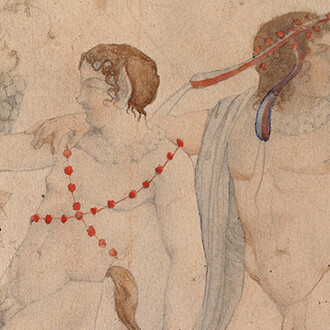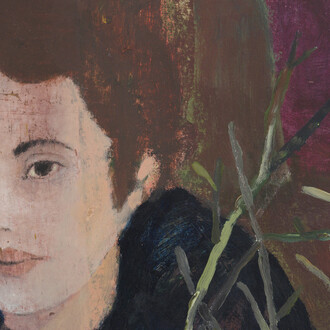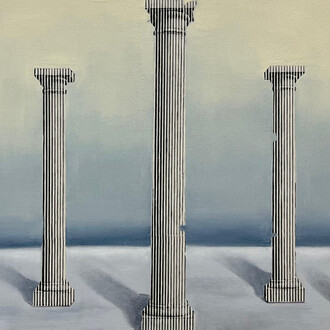Over the last two years, my mentality has changed regarding the choice and framing of the posters I collect. Previously, I insisted on subverting a commercial or political aspect. The slogan, the brand name of the product became illegible, the celebrity or the politician’s smile disfigured. When I snatched posters from painting exhibitions, even if I held the exhibited painter in high esteem, despite the distorting irony provided by the tears, I had the feeling of being confined to my own milieu as a visual artist. Conversely, this new thematic series about itinerant music groups, rappers and rockers, does away with any and all insecurity. The redundancy of their names, so sparsely hatched and legible most of the time, provides a clarity of information that doesn't bother me at all.
I hope to create a bridge between two spheres which, although related, have little interaction and hardly ever mingle. In the same way, I hope to encourage their different audiences to immerse themselves in an art form that may have been indifferent to them.
The exhibition Jacques Villeglé, Star, the first organized by the gallery since the artist’s death in 2022 and the 13th since the beginning of our collaboration in 1999, was conceived as a tribute to his insatiable curiosity, exploring his relationship with the world of entertainment (cinema, dance, theater and music) from the 1950s to the end of his career.
Julie Chaizemartin writes in the exhibition catalog: "Each demonstration of the people, each clamor of joy, each crowd movement, each news flash, each collective emotion, could be matched by a torn poster by Jacques Villeglé.
In this direct relationship to the voice and desire of the people, lies the relevance of the artist's gesture: he has appropriated the ready-mades of the street, torn, slashed and smeared by anonymous people and the passage of time, and erected them as works of art. From this practice (...) arose the concept of the "Lacéré anonyme" (...) theorized by Villeglé as an artistic protocol for taking stock of a popular imagery that is omnipresent in our daily lives (...).
Nostalgia invites itself into this great plastic socio-cultural capharnaüm, which is transformed into a moving archive of our public squares, where the voices of democracy and culture have always been heard, where dissenters have protested, where the people have expressed themselves. Like the frescoes of Pompeii, they depict the lifestyle of a bygone era, the golden age of rock and liberty, from the most famous Parisian theater to the smallest municipal hall in the suburbs. Relaying the news from concert halls, theaters and cinemas, they are also proof of the spread of culture to all strata of society.
But through them, Villeglé's interest in the non-hierarchy of the arts that shines through above all".
The catalog, published by the gallery and Les presses du réel, also includes a foreword by Emma Lavigne, director of the Pinault Collection, and an essay by Jeff Mills, musician and visual artist.
At the same time, the gallery will be presenting the artist's first retrospective in its New York space, Jacques Villeglé, The french flâneur (Works from 1947 to 2006).














